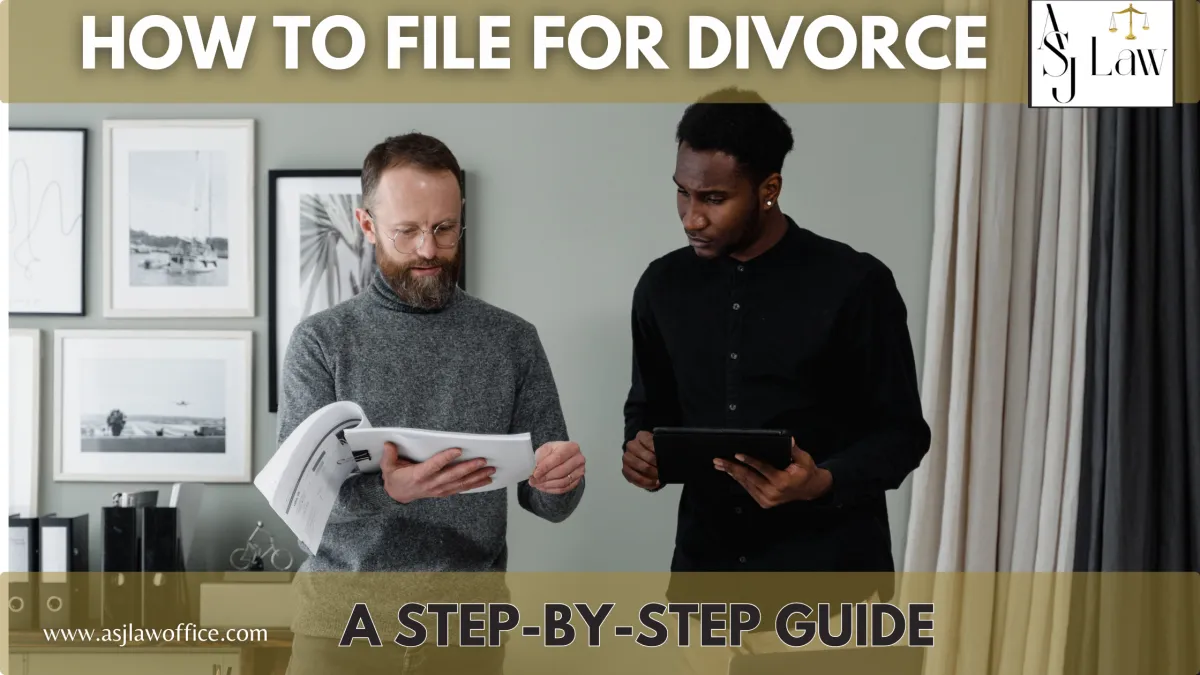
How To File for Divorce: A Step-by-Step Guide for Those Who Want Clarity, Control, and a Clean Break
How To File for Divorce: A Step-by-Step Guide for Those Who Want Clarity, Control, and a Clean Break
Divorce Doesn’t Have to Break You
Filing for divorce is rarely easy, especially when you are the one taking the first step. Whether your marriage has been quietly dissolving for years or a recent event made it clear the relationship must end, one thing remains true: clarity equals power. And the earlier you understand the process, the more control you gain.
If you're like our clients, a driven, high-functioning professional juggling work, parenting, and personal change you need guidance that's direct, strategic, and built for action. This blog gives you exactly that: a no-fluff, step-by-step guide to filing for divorce in New York, including the legal documents you'll need, the stages of the process, and why each one matters.

Step 1: Decide If You Qualify for an Uncontested Divorce
Before filing anything, determine whether your divorce will be contested or uncontested.
Uncontested Divorce means both spouses agree on all major issues: property division, custody (if applicable), child support, and spousal support.
Contested Divorce means there's disagreement on at least one issue that will require court intervention.
If your divorce is uncontested, the process will be faster, less expensive, and more private. ASJ Law Office often helps clients like Jake navigate this route efficiently when possible.
Step 2: Complete the "Summons With Notice" or "Summons and Verified Complaint"
Your divorce begins with paperwork. You must file one of the following in the New York Supreme Court:
Summons With Notice (Form UD-1): Notifies your spouse you are filing for divorce and includes the grounds (reasons).
Summons and Verified Complaint (Form UD-2): A more detailed document that lays out what you are asking the court to decide (property, custody, support, etc.).
Why it matters: This is your first official move. It sets the tone for the divorce. Accuracy, tone, and positioning are key.
Step 3: File the Papers With the County Clerk
Bring your documents to the County Clerk's office where you or your spouse lives. You will also need:
Index Number Application (Form UD-13)
Filing fee (currently \$210 in New York)
Once you file, you will receive an Index Number that becomes your divorce case number.
Why it matters: Filing gives your case legal standing and starts the legal clock.
Step 4: Serve Your Spouse
You must legally "serve" (deliver) the divorce papers to your spouse within 120 days of filing. This must be done by a third party over the age of 18 (not you).
Options include:
Professional process server
County sheriff
Trusted friend (as long as they are not involved in the case)
Affidavit of Service (Form UD-3) must be completed and submitted.
Why it matters: Proper service is required for your case to proceed. If your spouse is not served correctly, the case could be delayed or dismissed.
Step 5: Wait for a Response
Your spouse has 20 days (if served in person in New York) or 30 days (if served outside the state) to respond:
If they agree: The case moves forward as uncontested.
If they contest: You may need to attend court conferences, mediation, or a trial.
Step 6: Exchange Financial Disclosure Documents
Both parties must complete and exchange:
Net Worth Statement (Form UD-4)
Statement of Proposed Disposition (Form UD-5) in contested divorces
These forms list assets, income, debts, and expenses.
Why it matters: Full financial disclosure is required to ensure fairness in property division and support agreements.
Step 7: Draft and Sign the Settlement Agreement
If uncontested, your lawyer will prepare a Settlement Agreement covering:
Property and debt division
Parenting time and custody (if kids are involved)
Child support and spousal maintenance (if applicable)
Both parties sign the agreement, and it becomes part of your final divorce judgment.
Step 8: File Additional Forms for Final Judgment
Your lawyer will now prepare and file the following:
Affidavit of Plaintiff (Form UD-6)
Affidavit of Defendant (Form UD-7) if your spouse agrees
Note of Issue (Form UD-9)
Judgment of Divorce (Form UD-11)
Part 130 Certification (Form UD-12)
Certificate of Dissolution of Marriage
Why it matters: These forms finalize the process and allow a judge to sign off on your divorce.
Step 9: Judge Review and Final Divorce Judgment
The judge will review your paperwork. If everything is in order, they will sign the Judgment of Divorce. Once filed with the County Clerk, your divorce becomes official.
You will receive:
A copy of the signed Judgment
Your Certificate of Dissolution of Marriage
Step 10: Update Legal and Financial Accounts
Once divorced, make sure to update:
Estate plans and wills
Beneficiaries on retirement and insurance accounts
Joint bank accounts, credit cards, and real estate records
Why it matters: Protects your future and reflects your new legal status.
Bonus Step: Work With a Lawyer Who Understands the Male Experience
At ASJ Law Office, we understand that men often carry invisible burdens during divorce. You may feel pressure to "just get it done," to avoid court at all costs, or to stay quiet for the sake of the kids.
But silence can cost you time with your children, hard-earned assets, or your mental health. Our job is to help you take care of the paperwork, the legal rights, and the peace of mind.
We specialize in uncontested divorce for high-performing men who want discretion, efficiency, and control.
Ready to get started?

Book a free 15-minute call with ASJ Law Office to explore your next steps. This can be the summer you finally move forward with clarity.

